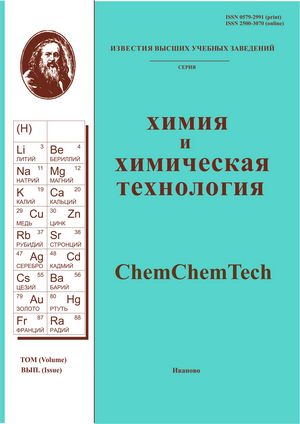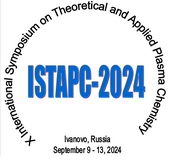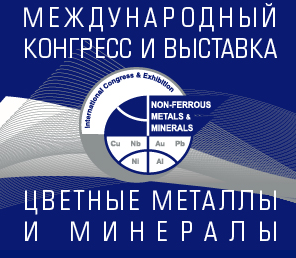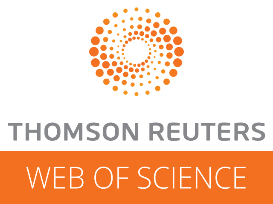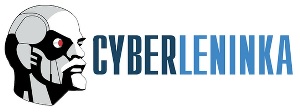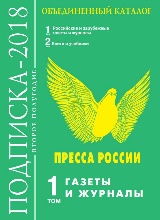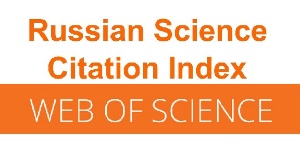СРАВНИТЕЛЬНОЕ ИССЛЕДОВАНИЕ ПАРАМЕТРОВ И СОСТАВА ПЛАЗМЫ В СМЕСЯХ CF4, Cl2 И HBr + Ar
Аннотация
В данной работе обсуждаются электрофизические параметры и химия плазмы в системах CF4 + Ar, Cl2 + Ar и HBr + Ar при одинаковых условиях возбуждения разряда. Исследования проводились методами диагностики плазмы зондами Лангмюра и моделирования плазмы в условиях планарного индукционного плазмохимического реактора при постоянном давлении газа (10 мТор), вкладываемой мощности (800 Вт) и мощности смещения (300 Вт), но при варьируемой (0-80%) доле Ar в плазмообразующей смеси. Основное внимание уделялось параметрам, определяющим стационарные концентрации активных частиц плазмы (температура электронов, концентрация электронов, константы скоростей реакций под действием электронного удара) и кинетику гетерогенных ионно-стимулированных химических реакций (потоки атомов галогенов, энергия ионной бомбардировки, поток энергии ионов).
Литература
Sugano T. Applications of plasma processes to VLSI tech-nology. New York: Wiley. 1990. 567 p.
Rooth J.R. Industrial Plasma Engineering. Philadelphia: IOP Publishing LTD. 1995. 620 р. DOI: 10.1201/ 9781420050868.
Roosmalen A.J., Baggerman J.A.G., Brader S.J.H. Dry etching for VLSI. New-York:Plenum Press. 1991. 490 р. DOI: 10.1007/978-1-4899-2566-4.
Wolf S., Tauber R.N. Silicon Processing for the VLSI Era. V. 1. Prosess Technology. New York: Lattice Press. 2000. 416 p.
Rossnagel S.M., Cuomo J.J., Westwood W.D. Handbook of plasma processing technology. Park Ridge: Noyes Publi-cations. 1990. 338 р.
Lieberman M.A., Lichtenberg A.J. Principles of plasma discharges and materials processing. New York: John Wiley & Sons Inc. 1994. 757 р.
Efremov A. M., Kim D.-P., Kim C.-I. Effect of gas mixing ratio on gas-phase composition and etch rate in an inductively coupled CF4/Ar plasma. Vacuum. 2004. V.75. P. 133. DOI: 10.1016/j.vacuum.2004.01.077.
Kimura T., Noto M. Experimental study and global model of inductively coupled CF4/O2 discharges. J. Appl. Phys. 2006. V. 100. P. 063303. DOI: 10.1063/1.2345461.
Kimura T., Ohe K. Probe measurements and global model of inductively coupled Ar/CF4 discharges. Plasma Sources Sci. Technol. 1999. V. 8. P. 553. DOI: 10.1088/0963-0252/ 8/4/305.
Plumb I. C., Ryan K. R. A model of chemical processes occurring in CF4/O2 discharges used for plasma etching. Plasma Chem. Plasma Proc. 1986. V. 6. P. 205. DOI:10.1007/BF00575129.
Gogolides E., Stathakopolous M., Boudouvis A. Modelling of radio frequency plasmas in tetrafluoromethane (CF4): the gas phase physics and the role of negative ion detachment.
J. Phys. D: Appl. Phys. 1994. V. 27. P. 1878. DOI: 10.1088/ 0022-3727/27/9/011.
Chun I., Efremov A., Yeom G.Y., Kwon K.-H. A com-parative study of CF4/O2/Ar and C4F8/O2/Ar plasmas for dry etching applications. Thin Solid Films. 2015. V. 579. P. 136. DOI: 10.1016/j.tsf.2015.02.060.
Ullal S.J., Godfrey A.R., Edelberg E., Braly L., Vahedy V., Aydil E.S. Effect of chamber wall conditions on Cl and Cl2 concentrations in an inductively coupled plasma reactor. J. Vac. Sci. Technol. A. 2002. V. 20. P. 43. DOI: 10.1116/ 1.1421602.
Yonemura S., Nanbu K., Sakai K. Electron energy distri-butions in inductively coupled plasma: comparison of chlorine discharge with argon discharge. Jpn. J. Appl. Phys. 2002. V. 41. P. 6189. DOI: 10.1143/JJAP.41.6189.
Malyshev M.V., Donnelly V.M. Diagnostics of chlorine inductively coupled plasmas. Measurement of electron tem-peratures and electron energy distribution functions. J. Appl. Phys. 2000. V. 87. P. 1642. DOI: 10.1063/1.372072.
Malyshev M.V., Fuller N.C.M., Bogart K.H.A., Donnelly V.M., Herman I.P. Diagnostics of inductively coupled chlo-rine plasmas: Measurement of Cl2+ and Cl+ densities. J. Appl. Phys. 2000. V. 88. P. 2246. DOI: 10.1063/1.1288156.
Efremov A.M., Kim G.-H., Kim J.-G., Kim C.-I. Self-consistent global model for inductively coupled Cl2 plasma: Comparison with experimental data and application for the etch process analysis. Thin Solid Films. 2007. V. 515. P. 5395. DOI: 10.1016/j.tsf.2007.01.027.
Efremov A.M., Kim G.-H., Kim J.-G., Bogomolov A.V., Kim C.-I. Applicability of self-consistent global model for characterization of inductively coupled Cl2 plasma. Vacuum. 2007. V. 81. P. 669. DOI: 10.1016/j.vacuum.2006.09.017.
Kwon K.-H., Efremov A., Kim M., Min N.K., Jeong J., Kim K. Model-based analysis of plasma parameters and ac-tive species kinetics in Cl2/X (X=Ar, He, N2) inductively cou-pled plasmas. J. Electrochem. Soc. 2008. V. 155. P. D777. DOI: 10.1149/1.2993160.
Kwon K.-H., Efremov A., Kim M., Min N.K., Jeong J., Kim K. A model-based analysis of plasma parameters and composition in HBr/X (X=Ar, He, N2) inductively coupled plasmas. J. Electrochem. Soc. 2010. V. 157. P. H574. DOI: 10.1149/1.3362943.
Efremov A., Kim Y., Lee H.-W., Kwon K.-H. A compara-tive study of HBr-Ar and HBr-Cl2 plasma chemistries for dry etch applications. Plasma Chem. Plasma Proc. 2011. V. 31. P. 259. DOI: 10.1007/s11090-010-9279-7.
Efremov A., Kim J.H., Kwon K.-H. A model-based com-parative study of HCl and HBr plasma chemistries for dry etching purposes. Plasma Chem. Plasma Process. 2015. V. 35. P. 1129. DOI: 10.1007/s11090-015-9639-4.
Johnson E.O., Malter L. A floating double probe method for measurements in gas discharges. Phys. Rev. 1950. V. 80. P. 58. DOI: 10.1103/PhysRev.80.58.
Sugavara M. Plasma etching: Fundamentals and applications. New York:Oxford University Press. 1998. 469 р.
Lee C., Lieberman M.A. Global model of Ar, O2, Cl2, and Ar/O2 high-density plasma discharges. J. Vac. Sci. Technol. A. 1995. V. 13. P. 368. DOI: 10.1116/1.579366.
Ashida S., Lieberman M.A. Spatially averaged (global) model of time modulated high density chlorine plasmas. Jpn. J. Appl. Phys. 1997. V. 36. P. 854. DOI: 10.1143/ JJAP.36.854.
Hsu C.-C., Nierode M.A., Coburn J.W., Graves D.B. Comparison of model and experiment for Ar, Ar/O2 and Ar/O2/Cl2 inductively coupled plasmas. J. Phys. D: Appl. Phys. 2006. V. 39. P. 3272. DOI: 10.1088/0022-3727/39/15/009.
Christophorou L.G., Olthoff J.K., Rao M.V.V.S. Electron interactions with CF4. J. Phys. chem. Ref. Data 1996. V. 25. P. 1341. DOI: 10.1063/1.555986.
Christophorou L.G., Olthoff J.K. Electron interactions with Cl2. J. Phys. chem. Ref. Data 1999. V. 28. P. 131. DOI: 10.1063/1.556036.
Peterson L.R., Allen Jr. J.E., Electron impact cross sections for argon. J. Chem. Phys. 1972. V. 56. P. 6068. DOI: 10.1063/1.1677156.
Jin W., Vitale S.A., Sawin H.H. Plasma-surface kinetics and simulation of feature profile evolution in Cl2+HBr etching of polysilicon. J. Vac. Sci. Technol. A. 2002. V. 20. P. 2106. DOI: 10.1116/1.1517993.
Gray D.C., Tepermeister I., Sawin H.H. Phenomenological modeling of ion enhanced surface kinetics in fluorine-based plasma etching. J. Vac. Sci. Technol. B. 1993. V. 11. P. 1243. DOI: 10.1116/1.586925.
Lee C., Graves D.B., Lieberman M.A. Role of etch prod-ucts in polysilicon etching in a high-density chlorine dis-charge. Plasma Chem. Plasma Process. 1996. V. 16. P. 99. DOI: 10.1007/BF01465219.
Efremov A.M., Kim D. P., Kim C.-I. Simple model for ion-assisted etching using Cl2/Ar inductively coupled plasma: ef-fect of gas mixing ratio. IEEE Trans. Plasma Sci. 2004. V. 32. P. 1344. DOI: 10.1109/TPS.2004.828413.

